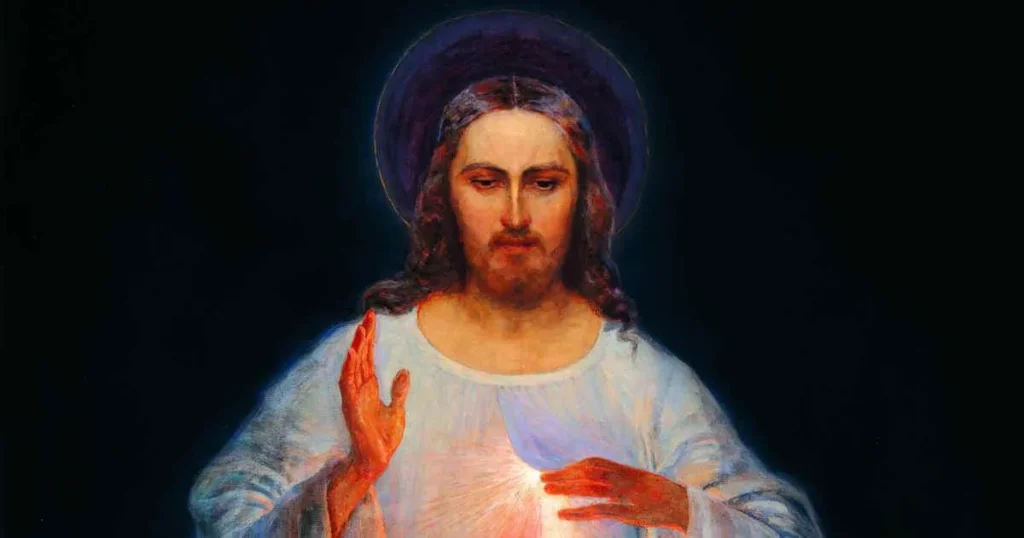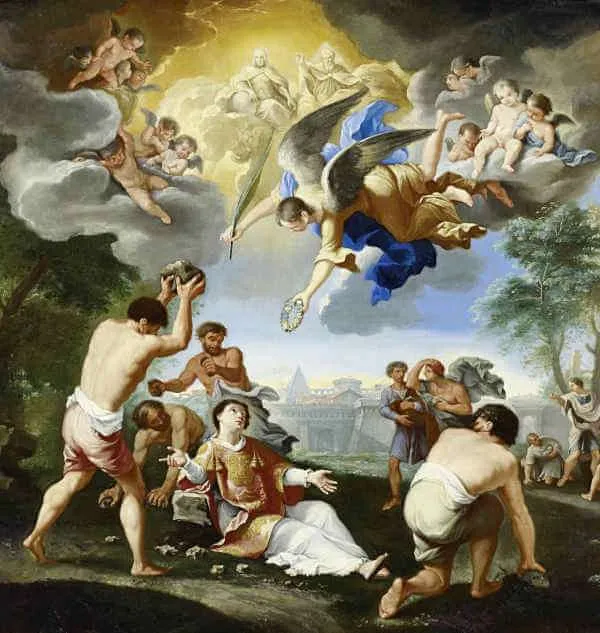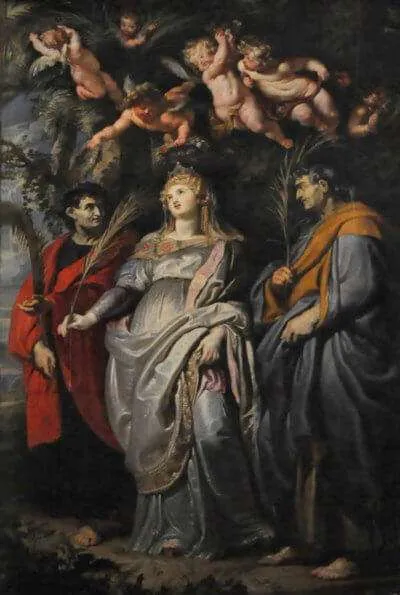In the year 2000, Pope John Paul II canonized Saint Maria Faustina Kowolska and added the Feast of Divine Mercy to the Church’s official calendar. Saint Faustina, who died in 1938, was a member of the Congregation of Sisters of Our Lady of Mercy in Krakow, Poland. She came from a simple and poor family of farmers, had only three years of rudimentary education, and performed the humblest of tasks in her convent. But she also was a mystic who was privileged to have many private revelations from our Lord. In obedience to her superior and spiritual director, she recorded these private revelations in six notebooks. Those notebooks are known today under the title: Divine Mercy in My Soul: Diary of Saint Maria Faustina Kowalska. The messages contained within her diary present profound communications from God for our day and age. Though the messages are many, there are several new ways that God is calling us to a new form of devotion.
A first way is through meditation on the image of Divine Mercy. Of this, Saint Faustina wrote:
In the evening, when I was in my cell, I became aware of the Lord Jesus clothed in a white garment. One hand was raised in blessing, the other was touching the garment at the breast. From the opening of the garment at the breast there came forth two large rays, one red and the other pale. In silence I gazed intently at the Lord; my soul was overwhelmed with fear, but also with great joy. After a while Jesus said to me, “paint an image according to the pattern you see, with the inscription: Jesus, I trust in You” (#47).
“The pale ray stands for the Water which makes souls righteous; the red ray stands for the Blood which is the life of souls. These two rays issued forth from the depths of My most tender Mercy at that time when My agonizing Heart was opened by a lance on the Cross….Fortunate is the one who will dwell in their shelter, for the just hand of God shall not lay hold of him” (#299).
A second way is through our participation in the Solemnity of Divine Mercy:
“On that day (the 8th day of Easter each year) the very depths of My tender mercy are open. I pour out a whole ocean of graces upon those souls who approach the fount of My mercy. The soul that will go to Confession and receive Holy Communion shall obtain complete forgiveness of sins and punishment. On that day all the divine floodgates through which grace flow are opened. Let no soul fear to draw near to Me, even though its sins be as scarlet. My mercy is so great that no mind, be it of man or of angel, will be able to fathom it throughout all eternity” (#699).
A third way is through the recitation of the Chaplet of Divine Mercy:
Once, as I was going down the hall to the kitchen, I heard these words in my soul: “Say unceasingly the chaplet that I have taught you. Whoever will recite it will receive great mercy at the hour of death. Priests will recommend it to sinners as their last hope of salvation. Even if there were a sinner most hardened, if he were to recite this chaplet only once, he would receive grace from My infinite mercy. I desire that the whole world know My infinite mercy. I desire to grant unimaginable graces to those souls who trust in My mercy” (#687).
A fourth way is by honoring Jesus’ passion at the 3 o’clock hour:
At three o’clock, implore My mercy, especially for sinners; and, if only for a brief moment, immerse yourself in My Passion, particularly in My abandonment at the moment of agony. This is the hour of great mercy for the whole world. I will allow you to enter into My mortal sorrow. In this hour, I will refuse nothing to the soul that makes a request of me in virtue of My Passion” (#1320).
A fifth way is through an apostolic movement to spread the message of Divine Mercy. During her lifetime, Sister Faustina believed Jesus was calling her to found a new congregation, but that never materialized. Jesus, nonetheless, spoke to her in ways that revealed His desire that this “new congregation” be established. Since a formal religious congregation was never founded in her lifetime, we must look to the founding of subsequent congregations and apostolic movements that seek to spread the messages of Divine Mercy. God is calling each of us not only to receive His mercy but to spread that mercy to others in personal and organized ways.
Though Saint Faustina died in 1938, we should see the messages in her Diary as messages God especially desires we learn and live today. God moves slowly and methodically. He first revealed these messages, then allowed them to be studied by the Church for decades, then led Pope John Paul to canonize her and establish the universal Feast of Mercy on the last day of the octave of Easter in the year 2000. For these reasons, we should see this as one of the newest and most relevant devotions in our lifetimes.
As we celebrate Divine Mercy Sunday, ponder the profound significance of this new form of devotion for the Church and world today. We need God’s abundant Divine Mercy to flow from the gates of Heaven upon us more than ever. Only in Heaven will we understand the full depths of God’s Mercy. For now, we must trust all that He has revealed through his humble servant Saint Faustina and respond to the requests He has given to us through her. Commit yourself to the various ways God has called us to call upon His Mercy and do so with as much vigor and devotion you can offer Him. The following is the 3 o’clock prayer Jesus gave to Saint Faustina:
Prayer: You expired, Jesus, but the source of life gushed forth for souls, and the ocean of mercy opened up for the whole world. O Fount of Life, unfathomable Divine Mercy, envelop the whole world and empty Yourself out upon us (#1319). Jesus, I trust in You.
Source: https://mycatholic.life/catholic-prayers/triduum-and-easter-prayers/divine-mercy-sunday/







